2017 NHL Arena Logo Collection
/All 31 logos for all 31 NHL arenas have been collected in this post. Why? I'm not entirely sure. Just for fun.
Read MoreAll 31 logos for all 31 NHL arenas have been collected in this post. Why? I'm not entirely sure. Just for fun.
Read MoreTwo weeks ago, I put NHL arena logos on display just for fun. This weekend, we're taking a look at what the AHL has to offer in this area. Yesterday, it was the rink in the Eastern Conference. Today, the Western Conference. Enjoy.
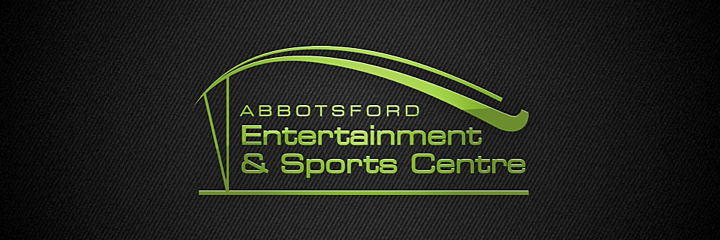
Abbotsford Entertainment & Sports Centre opened in 2009 in Abbotsford, B.C. — and just a few months later, it became home to the Abbotsford Heat. The Heat are the latest incarnation of a franchise that has been rather nomdic over past decade, relocating every few years. After leaving Saint John, New Brunswick in 2003, the club played in Omaha, Neb. and Moline, Ill. before arriving in British Columbia.

The Time Warner Cable Arena was built for the NBA. In fact, when it opened in 2005, it was called the Charlotte Bobcats Arena. But back then, the Charlotte Checkers were an ECHL franchise and shared the arena with the Bobcats. That team was dissolved in 2010, however, when the AHL's Albany River Rats moved to North Carolina and assumed the Checkers nickname. Time Warner Cable bought the naming rights in 2008 and changed the logo as part of a 2010 corporate rebranding.
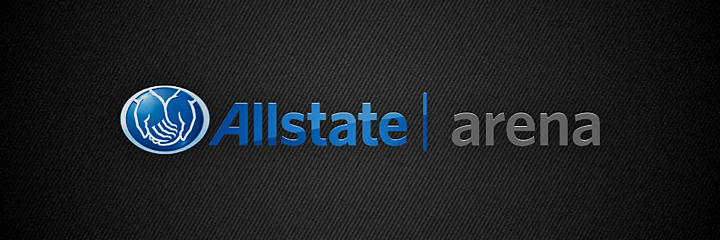
Located in Rosemont, Ill., just outside of Chicago, is Allstate Arena — known as Rosemont Horizon from its opening in 1980 until 1999. It's been home to the Chicago Wolves since their entry into the International Hockey League in 1994. The Wolves transferred to the AHL when their original league went belly up in 2001.

The story of Van Andel Arena in Grand Rapids, Mich. is not unlike that of Allstate Arena. It began life in 1996 housing IHL hockey in the form of the Grand Rapids Griffins. Like the Wolves, the Griffins joined the AHL in 2001 where they still play today.
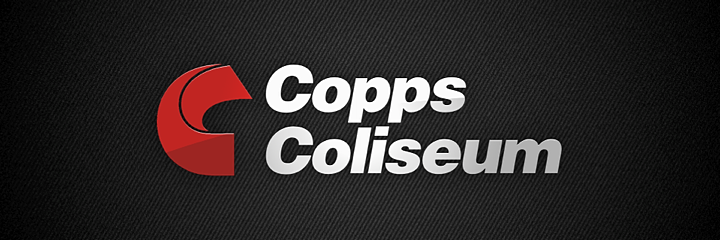
Copps Coliseum has hosted Hamilton Bulldogs hockey for the past 20 years. But it hasn't always been the same franchise. The original Bulldogs arrived from Sydney, Nova Scotia in 1996 but left in 2002 to become the Toronto Roadrunners. However, at the same time, the Quebec Citadelles moved in and became the new Bulldogs. So as far as fans are concerned, their team hasn't missed a beat.
But there's a pre-Bulldogs history to include. The Coliseum opened in 1985 where it hosted OHL junior teams until 1991. The AHL's Hamilton Canucks were formed in 1992 but moved to Syracuse, N.Y. after only two seasons. The Bulldogs entered the picture two years after that.

There's a bit of trouble brewing at Toyota Center in Houston, Texas. At the end of this season, the lease is up for the Houston Aeros and negotiations for a new one are not going well, according to the Houston Chronicle. No decisions have been made yet, but if a deal isn't done, it could spell the end of a long run of minor league hockey in Houston.
The Aeros were founded in 1994 in the IHL and joined the AHL in 2001. Since 2003, they've played at Toyota Center, which is operated by the NBA's Houston Rockets. They are the building's primary tenant.
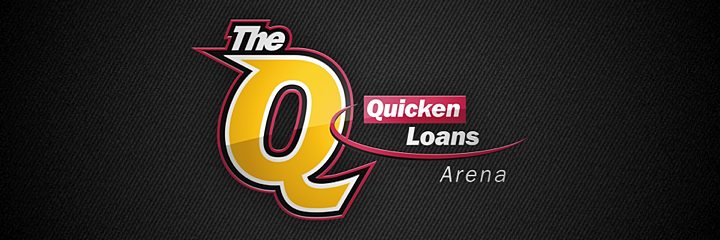
I'm sure you're noticing a lot of Western Conference AHL teams sharing buildings with the NBA. The Lake Erie Monsters are another example, as they've split time at Quicken Loans Arena with the Cleveland Cavaliers since 2007. The Q opened in 1994 as Gund Arena, housing the Cavaliers and the IHL's Cleveland Lumberjacks. The Jacks did not survive the dissolution of the league in 2001, but were immediately replaced by the AHL's Cleveland Barons — who moved from Lexington, Kentucky. They then moved to Worcester, Mass. in 2006.
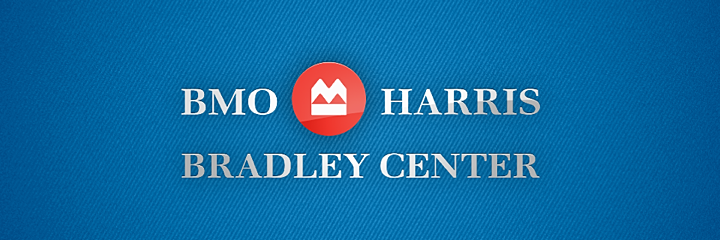
Another story you've heard a few times before in this post with just a few names changed. The BMO Harris Bradley Center (just the Bradley Center prior to the 2012 naming rights purchase by BMO Harris) houses the AHL's Milwaukee Admirals as well as the NBA's Milwaukee Bucks. It opened in 1988 with both of these teams as founding tenants — though the Ads were members of the IHL at the time.

The Cox Convention Center opened in 1972 as "The Myriad" and has hosted numerous hockey teams over the years. The Oklahoma City Blazers of the Central Hockey League did two stints, 1973—1977 and 1992—2002 and there was even a season of roller hockey in 1995 — the Oklahoma Coyotes. However, since 2010, the Oklahoma City Barons have been the prime resident.
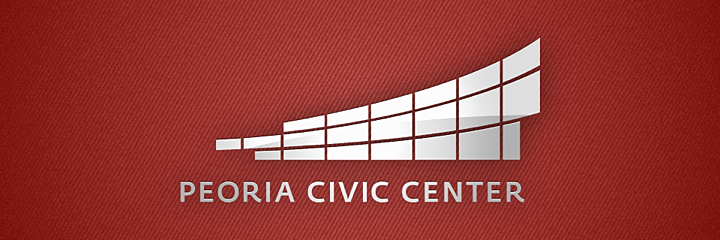
The Peoria Civic Center is part of a complex that includes Carver Arena, home to the Peoria Rivermen since arriving from Worcester, Mass. in 2005. But the Civic Center opened in 1982 and has always hosted some form of pro hockey. The Peoria Prancers were founded in 1982 and changed their name to Rivermen in 1984. In 1996, they moved to San Antonio, Texas but were replaced by a new ECHL team, also called the Rivermen, until the 2005 arrival of the AHL.
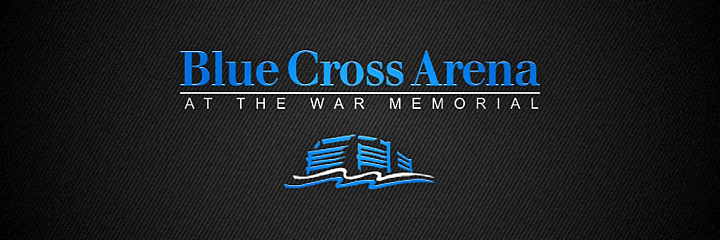
In downtown Rochester, N.Y., you'll find Blue Cross Arena at the War Memorial. Don't let the glass façade fool you; it was built in 1955 but got a major renovation in 1998 when Blue Cross picked up the naming rights. In all that time, it's been home to the Rochester Americans.

Look familiar? BMO Harris Bank owns the naming rights to not one, but two AHL rinks. Along with the Bradley Center in Milwaukee is BMO Harris Bank Center in Rockford, Ill. The arena opened in 1981 but didn't host hockey until 1999 when the UHL's Rockford IceHogs were founded. They went out on top, winning the 2007 UHL championship before being replaced by the AHL. The Cincinnati Mighty Ducks franchise had been re-established but failed to meet a season ticket sales goal, so the team relocated to Illinois and adopted the IceHogs moniker.
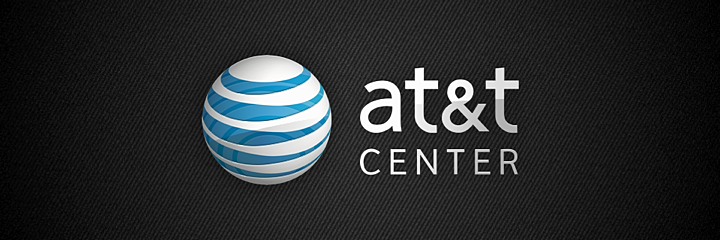
The AT&T Center opened in 2002 as the new home of the NBA's San Antonio Spurs, but at the same time, earned the city a brand new hockey team. The dormant Adirondack Red Wings franchise was re-established in Texas as the San Antonio Rampage.

One of the newer arenas in the AHL is the Cedar Park Center in Cedar Park, Texas — home of the Texas Stars. The Stars were the building's founding tenant and its reason for being built. Prior to 2009, the club was based in Des Moines, Iowa, first as the Iowa Stars, and later the Iowa Chops.

And finally, the Toronto Marlies have called Ricoh Coliseum home for all of their eight years of existence. But the building itself has been around since 1921! It was renovated in 2003 and its first tenant was the Toronto Roadrunners, who the Edmonton Oilers had just moved out of Hamilton, Ont. The NHL club then moved their affilate geographically closer to them (to Edmonton) the following season and suspended operations a year after that.
The Marlies moved from St. John's, Newfoundland in 2005 after a season without hockey at the Coliseum. The arena was formerly known as Civic Arena and CNE Coliseum prior to Ricoh buying the naming rights in 2003 after the renovation.
Hope you found these posts at least half as interesting as the NHL arena posts.
A couple AHL relocations for the 2013-14 season means a couple new arenas to add to this post.
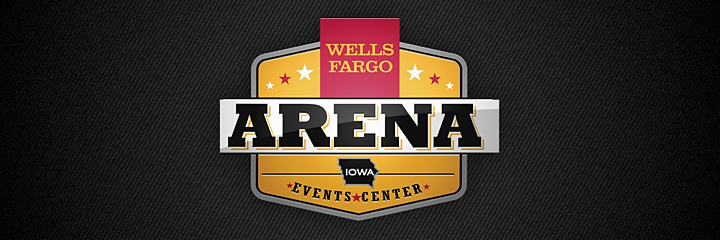
After failing to get a new contract at the Toyota Center, the Houston Aeros left town. They headed north for Des Moines, Iowa where they became the Iowa Wild and will begin playing home games at Wells Fargo Arena, a venue that's part of the Iowa Events Center.
The arena opened in 2005 with Iowa Stars as a primary tenant. That team was renamed the Iowa Chops in 2008 when they signed an affiliation deal with the Anaheim Ducks. A year later, the franchise linked up with Dallas again and moved to Cedar Park leaving Des Moines without any AHL action for the last five years.

After the Vancouver Canucks purchased the Peoria Rivermen, they decided Illinois wasn't for them. The team moved to Utica, N.Y. and became the Utica Comets this summer. They will play at the Utica Memorial Auditorium beginning this fall. And to mark the occasion, The Aud is undergoing a bit of a rebranding — as well as some renovations. This new logo is in the process of being implemented.
The 63-year-old building has hosted a number of minor league hockey teams in its time, but the last AHL game took place 20 years ago before the Utica Devils left in 1993.
By the way, weird coincidence that both these logos use the same font.
Anyone know if any AHL arenas have been renamed or rebranded in the last six months?
These posts on arena logos have been getting pretty decent feedback from you guys. So I figured I'd go ahead with a look at rinks from around the American Hockey League. We'll start with the Eastern Conference today and focus on the other half tomorrow.

We begin with the 34-year-old Glens Falls Civic Center, the temporary home of the Adirondack Phantoms — and former home of the Adirondack Red Wings for two decades. When the Spectrum was closed in 2009, the Philadelphia Phantoms were forced to find a new place to play. They headed up to Glens Falls, N.Y. but the plan was always to return to Pennsylvania. In time for the 2014-15 season, the team will depart Glens Falls for a new building in Allentown, Penn. where they'll be renamed the Lehigh Valley Phantoms.
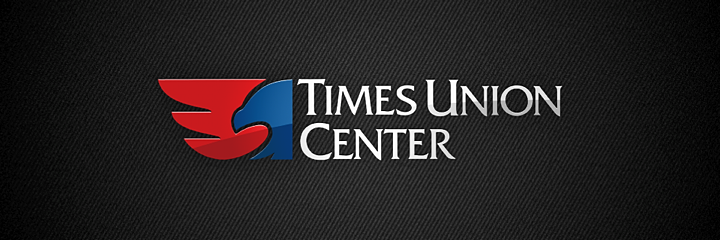
The Times Union Center in Albany, N.Y. has hosted pro hockey since it opened in 1990 and is currently home to the Albany Devils. The fun started with the Albany Choppers of the IHL at a time when the building was named Knickerbocker Arena. But the IHL club was terrible and got run out of town after one season by a new nearby AHL team, the Capital District Islanders.
In 1993, the Islanders got a new owner who moved them into the Choppers' old building. They were renamed the Albany River Rats and endured two renamings of their building over the years — Pepsi Arena in 1997, and ultimately, Times Union Center in 2007. The River Rats moved to North Carolina and became the Charlotte Checkers in 2010. At the same time, the Lowell Devils left Massachusetts and ensured that Albany would continue to host AHL hockey.
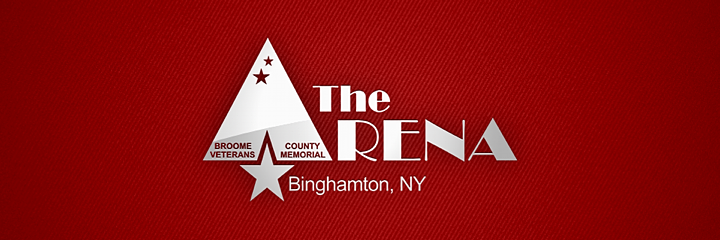
The Broome County Veterans Memorial Arena doesn't have a terribly exciting name or logo, but that's par for the course when you're talking about 40-year-old buildings owned by municipalities. The Binghamton Senators haved played here since 2002 but they're far from the first. Hockey came to Broome County by way of the NAHL's Broome Dusters (clever) when the arena opened in 1973.
Four years later, they were replaced by the AHL when the Rhode Island Reds arrived in 1977 and became the Binghamton Dusters. The team was renamed Whalers in 1980 and Rangers in 1990. (Think you can probably track the NHL affiliation changes there.) In 1997 — after a 20-year run — the team left for Connecticut where they became the Hartford Wolf Pack.
During their five years without the AHL, Binghamton turned to the United Hockey League. Enter the B.C. Icemen (that's B.C. for Broome County, not British Columbia, of course). But they went away when the Prince Edward Island Senators franchise was re-established in Binghamton after a six-year hiatus.

Here's a modern-looking AHL arena logo. The Bridgeport Sound Tigers were the founding tenant of The Arena at Harbor Yard in 2001. Webster Bank bought the naming rights in 2011.

Remember the Binghamton Dusters from earlier? They're the Connecticut Whale now and host opponents at XL Center in Hartford, Conn. — a building that once housed NHL and WHA hockey. The Wolf Pack, as they were known then, arrived in 1997 to fill the void left by the Hartford Whalers, who moved to North Carolina.
The arena opened in 1975 as the home of the WHA's New England Whalers but the roof collapsed in 1978 and closed for a couple of years. By the time the building reopened, it was for NHL hockey. The naming rights were purchased in 2007 by XL Group, a financial services company. But that contract runs out later this year.
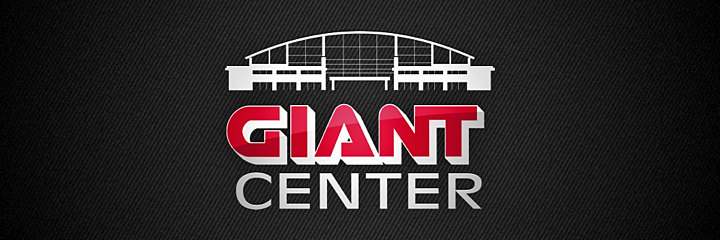
The Giant Center houses one of the AHL's oldest franchises, the Hershey Bears. It opened in 2002 in Hershey, Penn. and never looked back. Prior the move, the Bears played at Hersheypark Arena which is approaching its 80th birthday. But the team still uses that rink to practice.
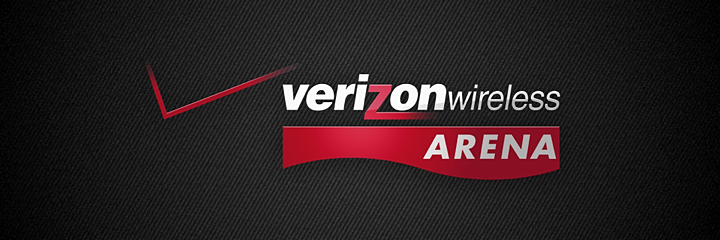
Manchester, N.H. is where you'll find Verizon Wireless Arena and its sole tenant, the Manchester Monarchs. The team was founded in 2001 just in time to open the new building.

This one is a little tricky. The Norfolk Admirals technically play at Scope Arena in Norfolk, Va. — a building that opened in 1971. But the arena is part of a larger complex of venues, now known as Seven Venues — which uses the above logo. And I haven't been able to track down a current version of the Scope logo, if one even exists. Could definitely use a hand if there are any locals that can help out. The Ads have played at Scope since their inception in 1989.

The Cumberland County Civic Center is located in Portland, Maine. It opened in 1977 and has housed AHL hockey for all but one year since. In 1993, the CCCC welcomed the Portland Pirates to town from Baltimore, Md. but before that, the original tenant was the Maine Mariners. They departed for Rhode Island in 1992 where they currently exist as the Providence Bruins.

Hey, speaking of the Providence Bruins! The Bruins call the Dunkin' Donuts Center home, but only since their arrival in 1992. The building has a much longer history. It was simply the Providence Civic Center when it opened in 1972 as the second home of the Providence Reds (who would later become the Connecticut Whale, see above). That team left for Binghamton in 1977, which left a 15-year gap without pro hockey in Rhode Island's capital city.
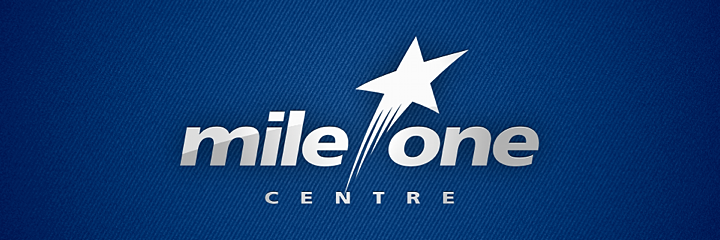
The newest member of the AHL arena party is the Mile One Centre in St. John's, Newfoundland — but it's not their first rodeo. After a three-year absence, it returned to the hockey fray in 2011 with the arrival of the Manitoba Moose, who were booted from their home by the new Winnipeg Jets. Once in Newfoundland, they became the St. John's IceCaps.
The Mile One Centre opened in 2001 as the new home of the St. John's Maple Leafs, who arrived from Newmarket, Ont. in 1991. They went back to that province in 2005 and became the Toronto Marlies. From there, the arena was home to the QMJHL's St. John's Fog Devils, who left in 2008 for Montreal and eventually became the Blainville-Boisbriand Armada in 2011.

Opened in 1972, the Springfield Civic Center has always been a place for hockey. And like Hartford's XL Center, it has the distinction of hosting NHL action for a time. Remember how XL's roof collapsed in 1978? Springfield, Mass. is where the Whalers played during renovations — and made their transition from WHA to NHL.
The Springfield Kings became the first resident of this arena in 1972 after leaving the aging Eastern States Coliseum, or The Big E. They were originally the Indians when founded in 1926 and switched back to that moniker in 1974. But two decades later, the team was sold and moved to Worcester, Mass. where they became the IceCats. Today, that team is the Peoria Rivermen.
In 1994, the AHL expanded to fill the gap left by the Indians' departure. Enter the Springfield Falcons we now know. And in 2005, the Massachusetts Mutual Life Insurance Company bought the naming rights to the building, today called MassMutual Center.

All right. Worst. Arena logo. Ever. Certainly the most corporate one I've ever seen. Syracuse, N.Y.'s War Memorial Arena is part of a group of venues collectively known as The Oncenter. Each has an indistinctive logo like this with varying icons on the left. Not impressed. But the Syracuse Crunch call it home.
The building itself has a long history, having opened way back in 1951. It may actually be the oldest AHL building still in use today. It's housed five different hockey teams over the years, but the Crunch arrived in 1994 after 14 years without the sport. Prior to that, the franchise played two seasons in Ontario as the Hamilton Canucks.
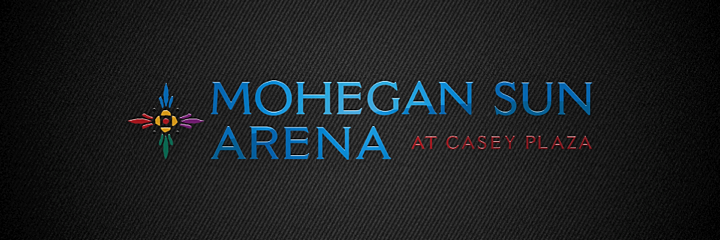
The Mohegan Sun Arena at Casey Plaza (in Wilkes-Barre, Penn.) opened in 1999 and re-established a dormant AHL franchise that had been affiliated with the Quebec Nordiques for 15 years. Last known as the Cornwall Aces in 1996, the Wilkes-Barre/Scranton Penguins began play when the building was called the Northeastern Pennsylvania Civic Arena and Convention Center.
A year after it opened, the naming rights were purchased by First Union. (Oh no, bank flashbacks!) And as we learned a couple weeks ago, First Union became Wachovia in 2003. The contract on Wachovia Arena at Casey Plaza ended in 2010 when Mohegan Sun at Pocono Downs took up the flag.
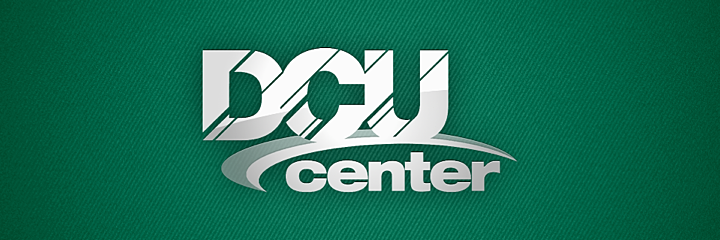
We finish today with the home of the Worcester Sharks — and yet another building named for a financial institution, the DCU Center. Digital Federal Credit Union paid for naming rights in 2004, two years before the Cleveland Barons relocated to Massachusetts. The building opened in 1982 as the Centrum in Worcester (and later the awful Worcester's Centrum Centre in 1997) but it hasn't always had hockey. The AHL was housed from 1994 to 2005 after the Springfield Indians moved and became the Worcester IceCats.
That's all for today. We'll get to the west tomorrow. (Ha, see what I did there?)
Last weekend, my posts on Arena Logos were an unexpected hit. Turns out, like me, a lot of you are fans of the esoteric. So I thought I'd revisit the subject by displaying some arena logos that are no longer in use. Check out the retirees.

From 2005 to 2009, the home of the Boston Bruins was known as TD Banknorth Garden. Four years ago, Banknorth was removed from the name and the arena is now known simply as TD Garden.

In 1999, the Buffalo Sabres' building was renamed HSBC Arena. That lasted for 12 years before they started calling it the First Niagara Center. But what the heck is going on with that logo? Might be the most abstract arena logo I've ever laid eyes on.
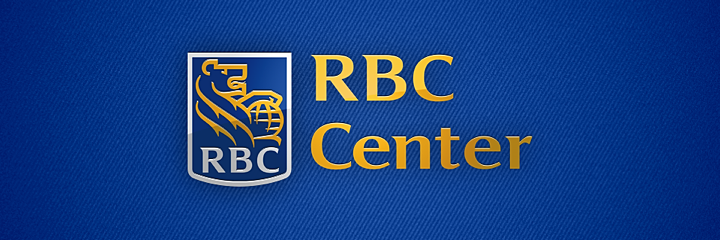
One of the more recent arena name changes saw Raleigh's RBC Center become PNC Arena last year. The Carolina Hurricanes call that building home.

Thanks to its unique roof design, the home of the Calgary Flames will always be called the Saddledome. But that doesn't mean sponsors won't try to stick their names in front of it. Before Scotiabank shelled out in 2010, Pengrowth Energy paid for 10 years worth of naming rights.
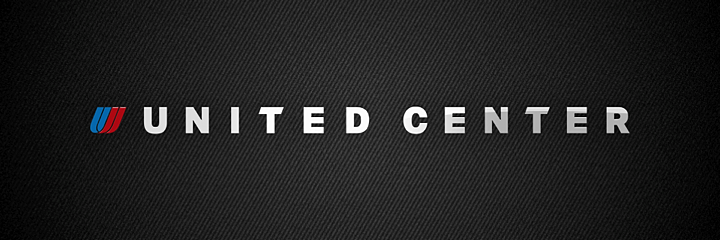
When United Airlines merged with Continental Airlines, a corporate rebranding led to a new logo for the United Center as well. This logo was used from the day the doors opened in 1994 until 2011. The Chicago Blackhawks have played there since 1995.
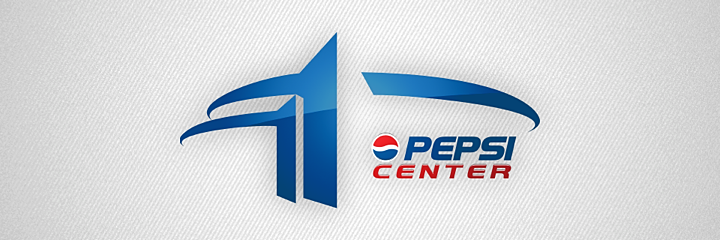
Not unlike the situation with United Airlines, when Pepsi rebranded itself, Denver's Pepsi Center also got a new logo. It was a really more of an update with some mountains added and the sponsor's logo revised. Still, what you see here is how the arena was branded when it started hosting Colorado Avalanche games in 1999. The new logo came about in 2009.
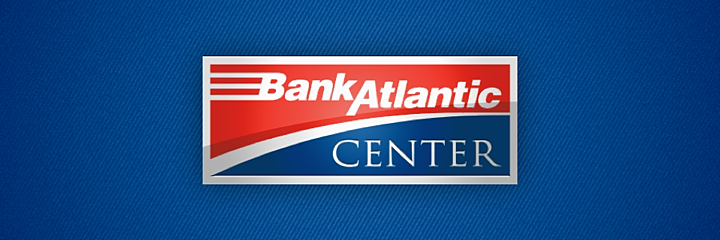
The home of the Florida Panthers has endured more than its share of names during its relatively short life so far. This was the third logo used since the arena opened in 1998. It was known as the BankAtlantic Center from 2005 until 2012, when it became the BB&T Center.

The New Jersey Devils got a shiny new home in the Prudential Center in 2007. But before that, they played out of the Continental Airlines Arena. That building actually became the Izod Center shortly after the Devils moved out.

The Nashville Predators played at Sommet Center from 2007 to 2010. There was a lot of drama with the company that paid for the name so the building actually went back to its original name, Nashville Arena, for a short time before Bridgestone stepped in. Speaking of which...

Eagle-eyed readers might take note that there have actually been two logos during the Bridgestone Arena era. This one above was the original. But it only lasted one season because of Bridgestone's corporate rebranding in 2011. To see the differences in the company's logos side-by-side, look here.
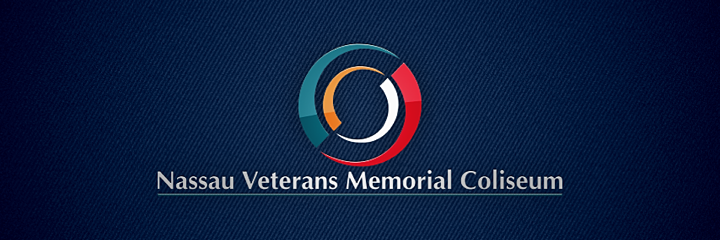
I'm not exactly sure when the change happened on Long Island, but this was the longtime logo of the Nassau Veterans Memorial Coliseum before the current logo came along. The new mark features the New York Islanders colors of orange and royal blue.
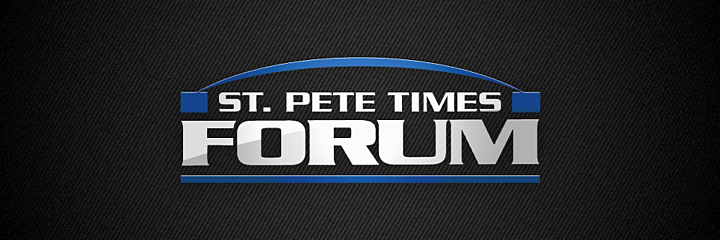
Now my favorite part! Between 2002 and 2012, the Tampa Bay Lightning played at the St. Pete Times Forum. The building's name changed when the newspaper's did just over a year ago. But the old logo was quite bold and quite boring. And that's not easy to achieve. But that might just be lingering distaste for the name change in the first place.
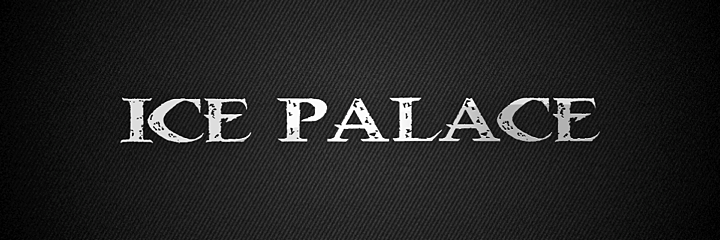
That's because when the arena opened in 1996, it was called the Ice Palace. Admit it, that's just a badass name for a hockey arena. Why did they ever change it? Everything comes down to money.
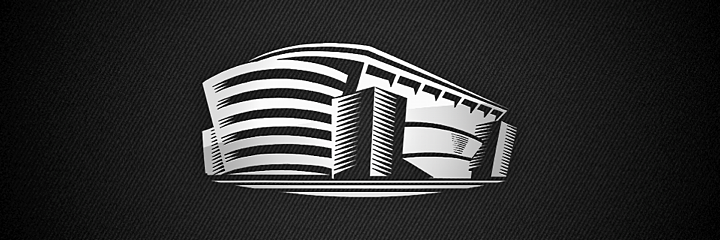
As a bonus, I stumbled across this mark in one of my old Lightning game programs. A couple readers mentioned they like seeing how arenas are represented graphically in logos. I think this is one of the coolest ever designed. But again, I'm not hiding my bias here. The ThunderDome also had a pretty great logo before it became Tropicana Field. I'm trying to track down a clean version to display here.

And finally, General Motors Place was home to the Vancouver Canucks until it was renamed Rogers Arena following the 2010 Winter Olympics. Its logo really has nothing to do with the buildling, sticking to natural elements of the Pacific Northwest — green mountains and, well, the sun is just wishful thinking.
That's all for now. One reader also suggested I tackle AHL arena logos at some point. Think I may prepare that post for next weekend if you guys are interested.
Thought it might be fun to take a look at the various arena logos from around the NHL. Yesterday you got a look at the rinks in the Western Conference. Today it's back east. Have a look.

The current home of the Boston Bruins has been colored by a series of bank mergers over the past two decades. When the Bs left their longtime home of Boston Garden in 1995, their new building was already having naming issues. The arena was supposed to be called Shawmut Center — named after Shawmut Bank. But the bank merged with FleetBoston Financial before it ever opened. So it was renamed the FleetCenter before it hosted its first game.
FleetBoston merged with Bank of America in 2004, but the FleetCenter name stuck around another year before a new deal allowed the rights holder to sell. For a month in early 2005, the name changed daily as the naming rights were auctioned off on ebay. The proceeds of that went to local charities. The building was simply known as YourGarden until TD Banknorth took over the rights in July. They kept the "Garden" part.
Then yet another merger required yet another new name for the building. In 2009, it became TD Garden — a name will still know it by today. Now, if only we can get someone to write a good pun incorporating Toronto-Dominion and the home of the Bruins.
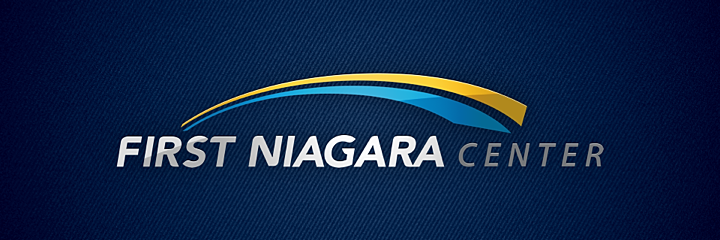
Oh good, another arena named for a bank. That won't get us into trouble. When The Aud closed in 1996, the Buffalo Sabres got a new home. It was called Marine Midland Arena. Yes, Marine Midland was a bank, but it was actually owned by HSBC. And in 1999, they decided to rename the building the HSBC Arena. Then in 2011, First Niagara Financial Group bought up some HSBC branches and wanted their name on the building. Hence, the First Niagara Center was born.

Hey, another bank. Awesome. The Carolina Hurricanes call PNC Arena home. But that's hardly the building's original name. First of all, when the Whalers arrived in North Carolina in 1997, they were forced to play at the Greensboro Coliseum while the Raleigh Entertainment & Sports Arena was being built. When it was finished in 1999, the Canes finally moved to the town they intended.
Then in 2002, naming rights to the new building were sold to RBC Bank — turning it into the RBC Center. Bank merger alert! RBC was purchased by PNC Financial Services in 2011. They changed the name on March 15, 2012.
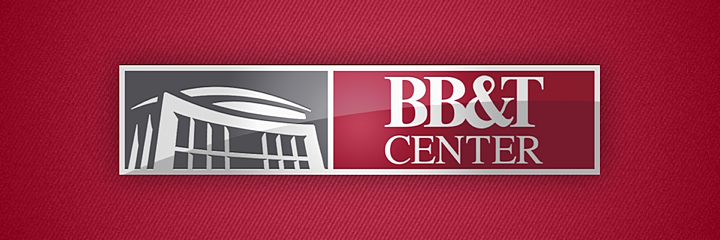
You've got to be kidding. I get that banks have the necessary cash for things like arena naming rights, but when you agree to that, you have to expect the name is just going to change every few years, right? Guess what. Wait for it. The Florida Panthers entered the NHL in 1993 playing out of Miami Arena — a building they shared with the NBA's Miami Heat — but moved out just five years later.
In 1998, they left for the shiny, new National Car Rental Center in Sunrise. Office Depot picked up the naming rights in 2002 for a few years. Then in 2005, it became the BankAtlantic Center. There it is. BankAtlantic was sold to BB&T in 2012 and the arena was renamed the BB&T Center.

After 72 seasons of hockey and 24 Stanley Cups in the Montreal Forum, the Montreal Canadiens departed in 1996 for the new Molson Centre. When Molson sold the team, they also gave up the naming rights. The building became the Bell Centre in 2002.

The Prudential Center, nicknamed "The Rock," is one of the newest buildings in the NHL, having been home to the New Jersey Devils since 2007. Prior to that, they played in the Continental Airlines Arena in East Rutherford, N.J. It was actually called the Brendan Byrne Arena when they arrived in 1982 — but most people referred to it as the Meadowlands Arena.
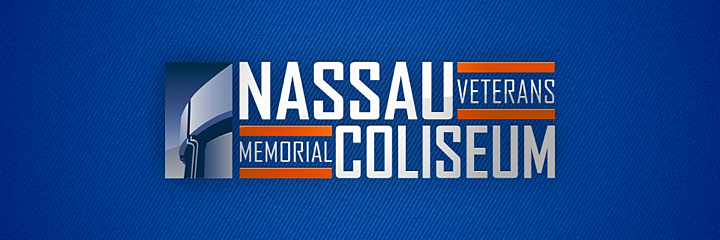
The New York Islanders are one of just a handful of NHL teams still playing in their original building after 40 years. They entered the NHL in 1972 and the Nassau Veterans Memorial Coliseum has been the only home the Isles have ever known. But that will soon change.
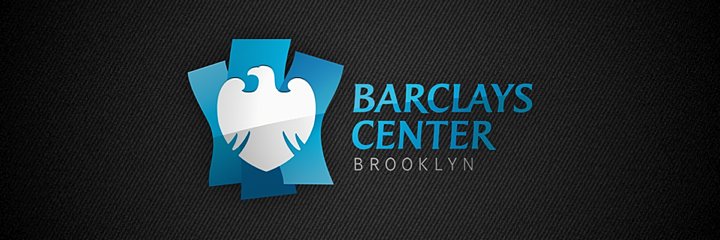
The Islanders announced in October that they will move to Brooklyn in 2015 — when their lease at The Coliseum ends. Their new arena will be the Barclays Center, which opened in September 2012. (Uh oh, not another bank!)
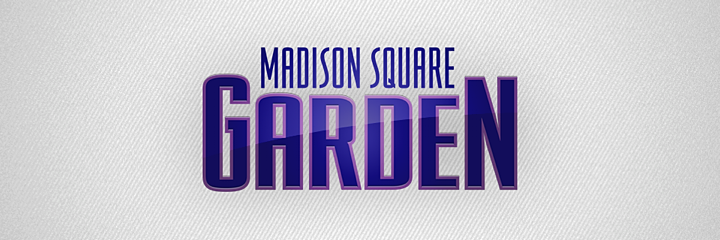
Billed as "The World's Most Famous Arena," Madison Square Garden has been home to the New York Rangers since 1968. The original MSG was first built in 1879 in another location. The Rangers actually debuted at the third incarnation of The Garden when they joined the NHL in 1926.

The NHL expanded back into Canada's capital in 1992 with the Ottawa Senators. They played at the Ottawa Civic Centre until The Palladium opened in the middle of the 1995-96 season. Prior to the next season, the building was renamed the Corel Centre, under a 10-year naming rights deal. When it expired in 2006, it became Scotiabank Place. (Anyone counting how many banks we're up to in the east?)
By the way, since Calgary's Saddledome was renamed in 2010, Scotiabank now has its name and logo on two NHL arenas.
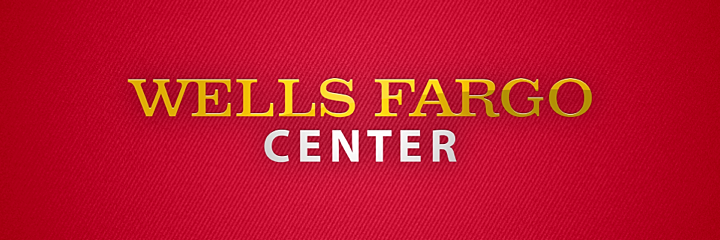
The Spectrum was built to house the Philadelphia Flyers in 1967. But after almost 30 years, the club upgraded to the new CoreStates Center in 1996. Wait, that's a bank. Here we go again. First Union acquired CoreStates Bank in 1998 — giving us the First Union Center. In 2003, First Union merged with Wachovia — so we had the Wachovia Center for a while. Then Wachovia was bought by Wells Fargo in 2008, but the building wasn't renamed Wells Fargo Center until 2010. How many more name changes can the "Spectrum II" endure before the existing 21-year deal is up? Only time will tell.
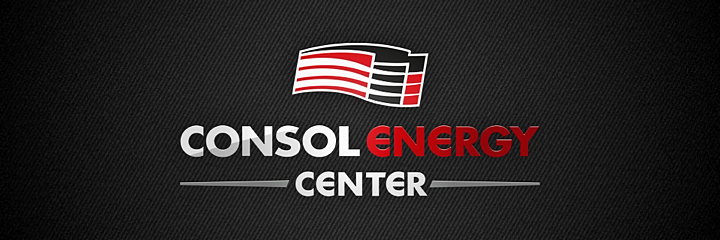
The NHL's newest building is the Consol Energy Center — home of the Pittsburgh Penguins since 2010. Previously, the Pens played at "The Igloo" — also known as Mellon Arena — from the time they entered the NHL during the 1967 expansion. When that arena was torn down in 2011, it was 50 years old.
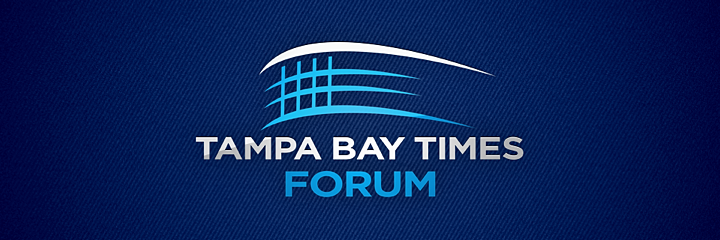
After playing their first season in a glorified barn on the Florida State Fairgrounds, the Tampa Bay Lightning left Expo Hall for the aptly re-christened ThunderDome. The Dome is now known as Tropicana Field, home of the MLB's Tampa Bay Rays. In 1996, the Bolts moved into their new home — the Ice Palace. If you ask me — and I know I'm biased — that is hands-down the best name EVER for an NHL rink.
But it didn't last. The naming rights were sold to the St. Petersburg Times in 2002 and the building was called the St. Pete Times Forum. In 2012, the newspaper changed its name to the Tampa Bay Times — so the arena's name was changed as well in the middle of last season. (It also got a much cooler logo.)
The Lightning actually have kind of a funny arena story when you look back. From 1993 to 1996, the "Tampa team" played in St. Petersburg, Fla. Then a few years after they finally arrived in downtown Tampa, their arena suddenly had "St. Pete" in its name. Quite confusing for most people outside the Bay Area.

The Toronto Maple Leafs played at Maple Leaf Gardens for almost 70 years before moving to Air Canada Centre in 1999. The Gardens, by the way, now house a grocery store. So at least they didn't tear it down the way every other storied NHL building has been.
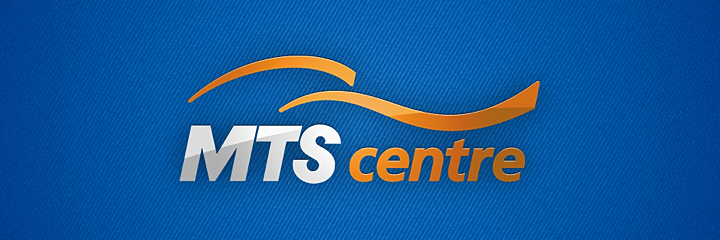
The MTS Centre has housed the new Winnipeg Jets since their arrival in 2011. Named for Manitoba Telecom Services, the arena was built by True North Sports & Entertainment and opened in 2004. It was home to the AHL's Manitoba Moose until the Jets moved in. The original Winnipeg Jets played at the Winnipeg Arena even during their WHA days in the 1970s. That building was demolished in 2006.

We finish with another building named for a telecom company — the Verizon Center, home of the Washington Capitals. It opened in 1997 as the MCI Center, but the name was changed in 2006 when Verizon acquired MCI. Prior to 1997, the Caps played at the Capital Centre, built in 1973 ahead of the team's arrival a year later. That building was renamed the USAir Arena in 1993 and again changed to US Airways Arena in 1997 when the airline rebranded itself.
Hope you found all of this as enlightening as I did. And I think if we learned one thing, it's that you should not sell naming rights to a bank. It's just going to cost you in the long run when you have to keep changing your signage every five minutes. Back to normal blog posts tomorrow.
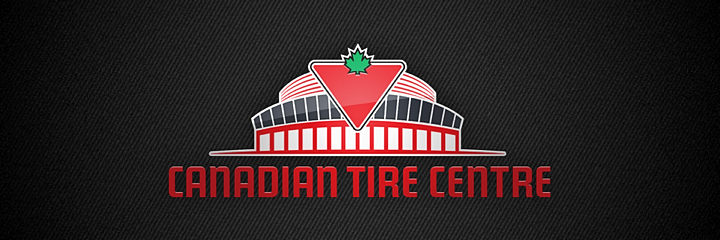
Got an arena logo update. As of about two weeks ago, the home of the Ottawa Senators has been renamed Canadian Tire Centre. The arena naming rights are part of a larger partnership between the two organizations, announced back on June 18. The new name took effect on July 1.
So that's one less bank now!